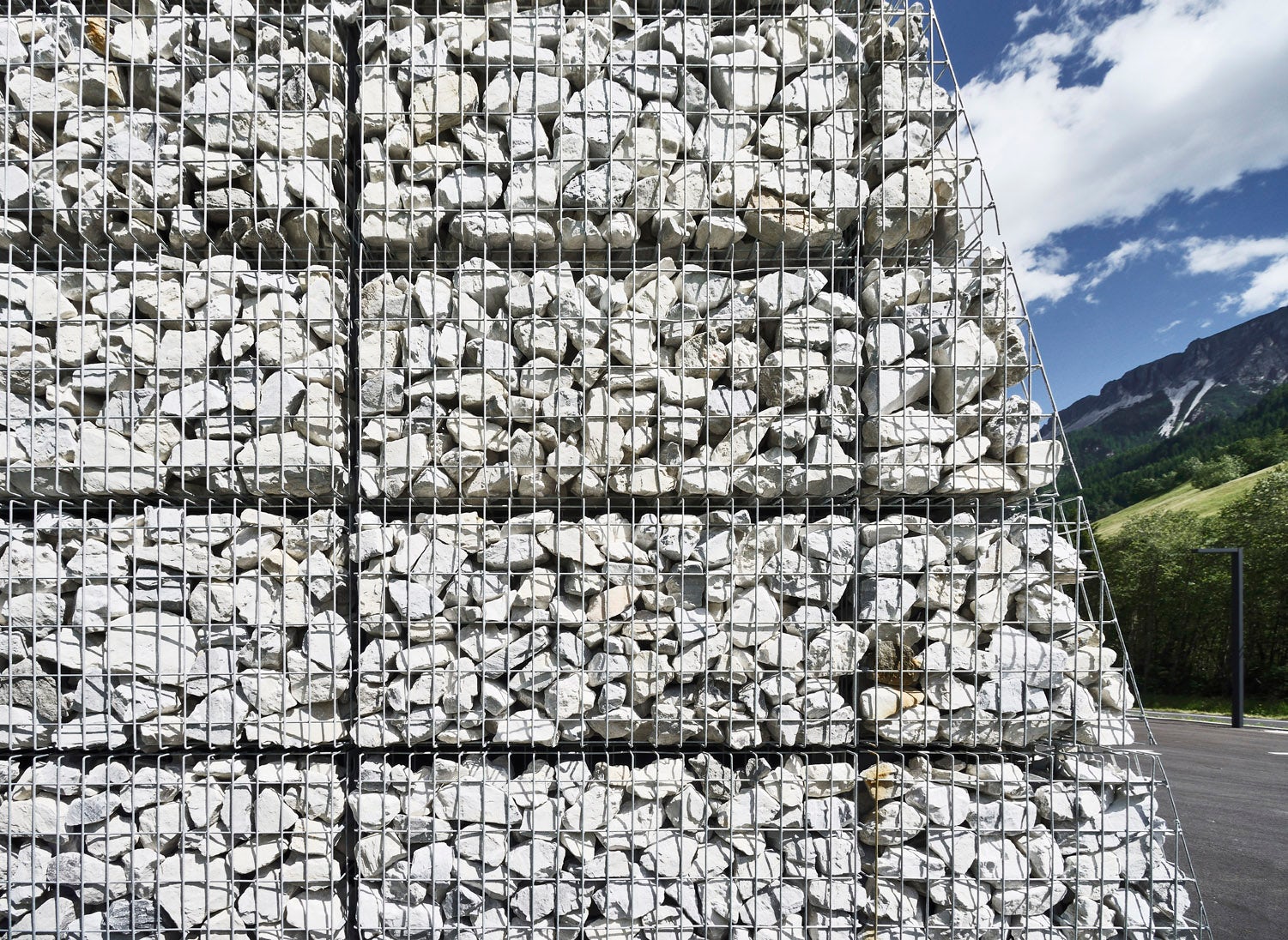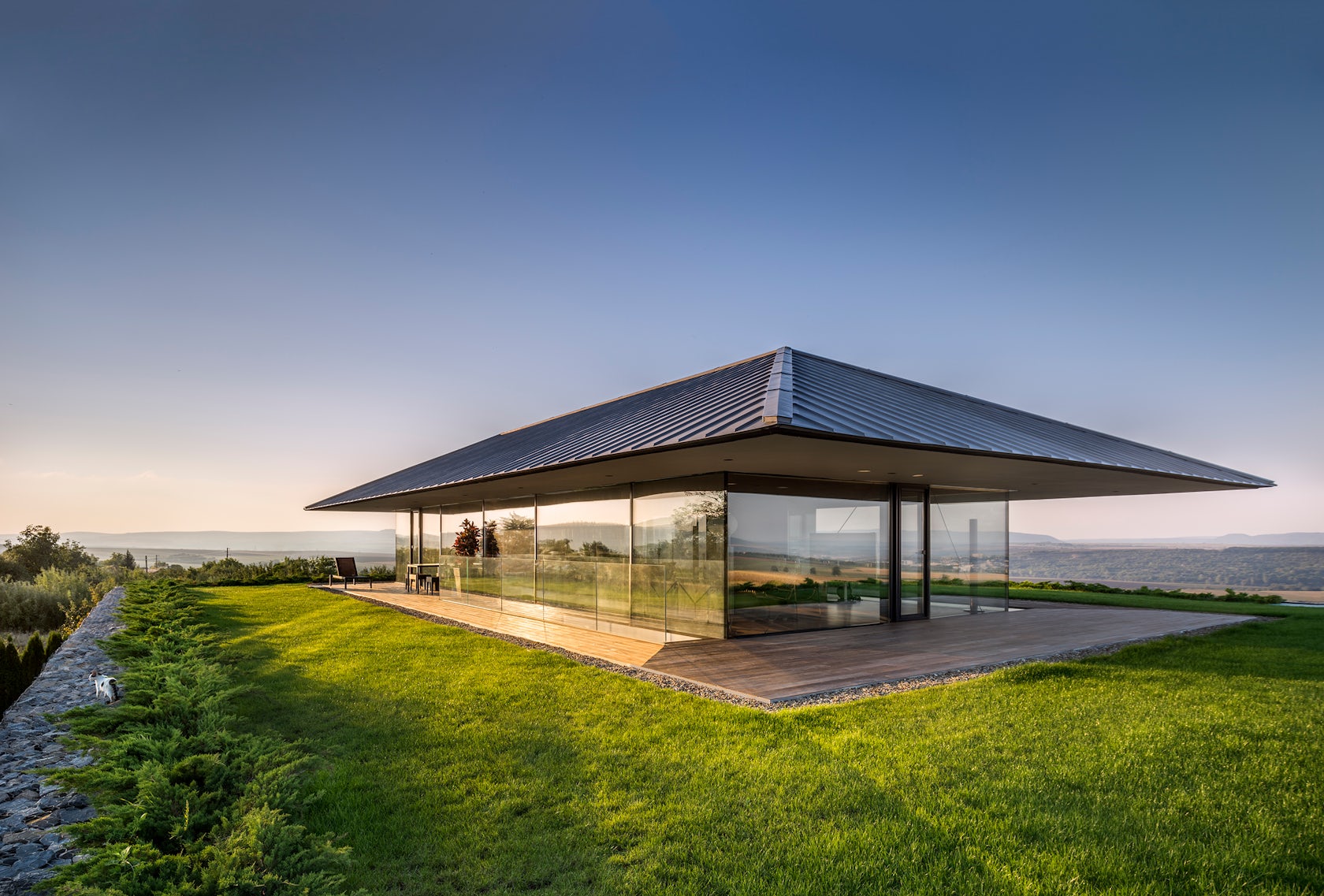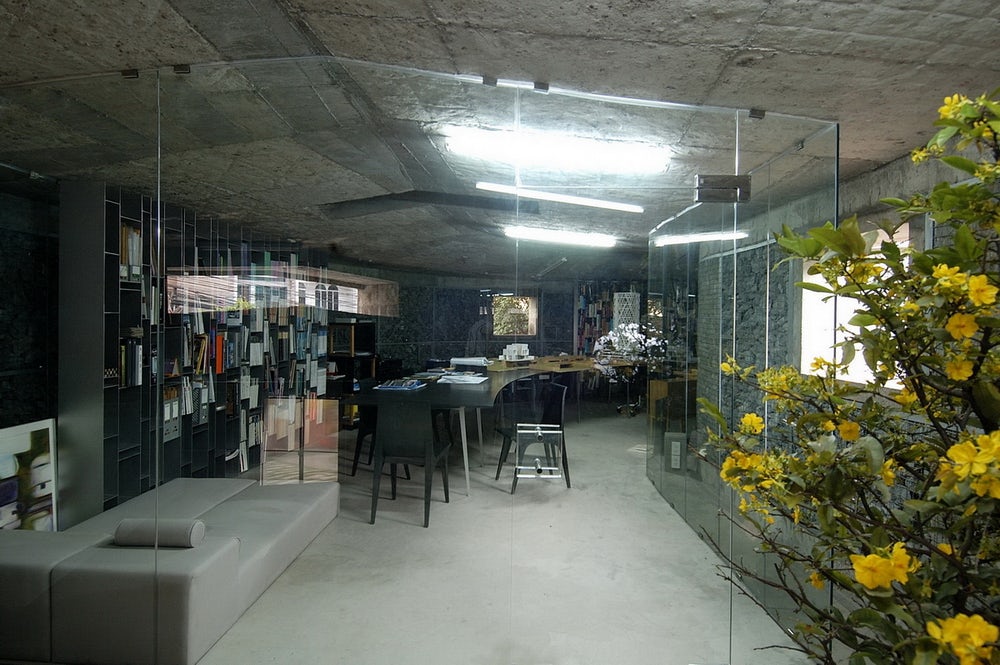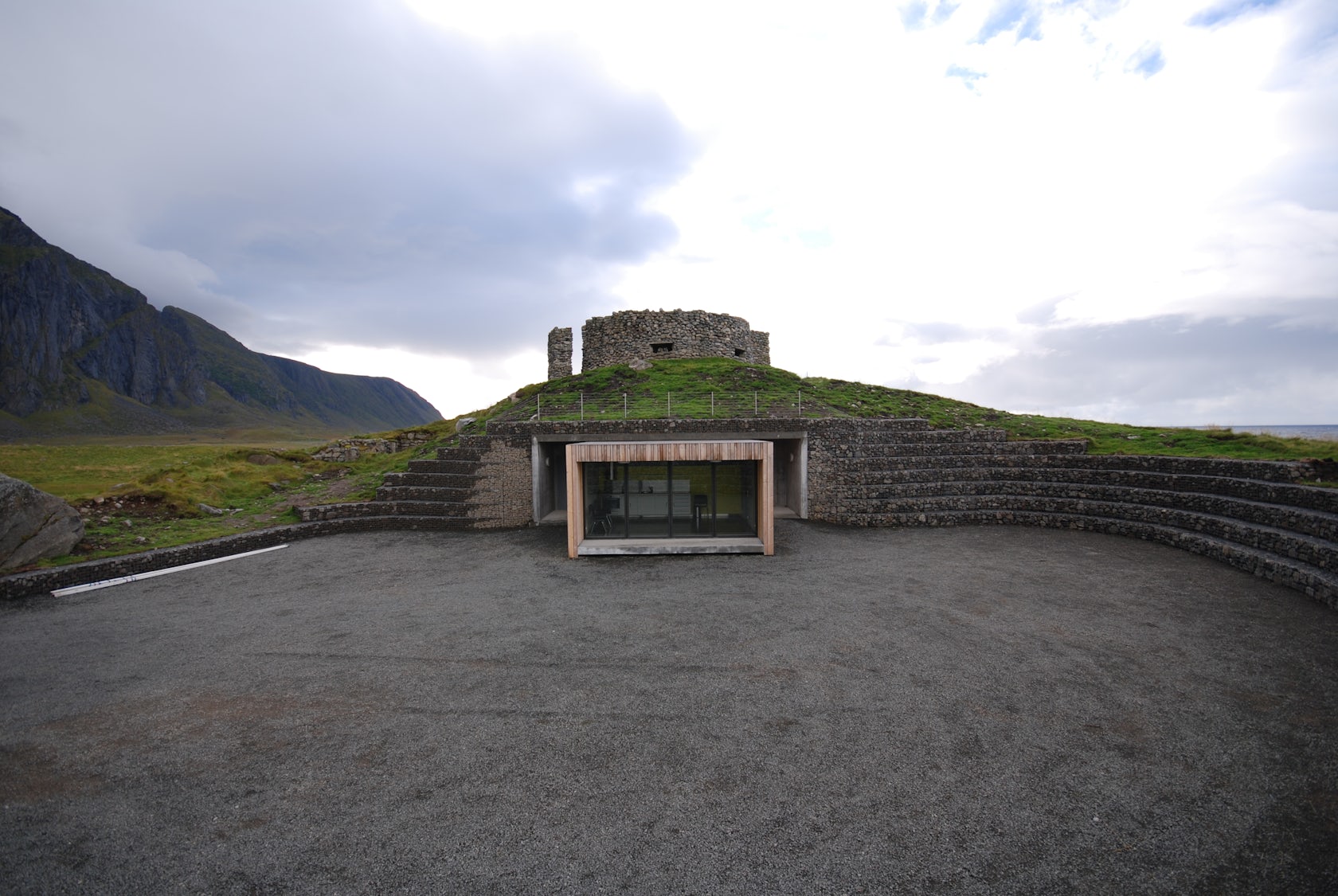Architects: Want to have your project featured? Showcase your work by uploading projects to Architizer and sign up for our inspirational newsletters.
Following up on our earlier round-up of gabion façades, we bring a fresh collection of this alternative building technique. Originating as a tool for civil engineering, the gabion wall dates back to the late 1800s. It slowly made its transition to architecture because of its superior strength and permeability. The gabion wall consists of a metal mesh cage filled with loose material, usually stones, sand or soil. The wall is crack resistant and contours to the grade of the site. The material used to fill the cages determines how porous the wall is, a feature often used to create a natural cooling effect.
Architects prize the gabion wall, traditionally used as a landscape material, for its bold, textured look. Unlike the orderly rock wall, gabion walls provide a feeling of accidentality to a building, allowing the eye to explore the irregular shapes and patterns. They are often used as exterior walls to provide a rugged, outdoor aesthetic, but are also exposed in the interior, merging the two both materially and environmentally.

© Oskar Da Riz

© Oskar Da Riz

© Oskar Da Riz
Fire Station Fleres by Roland Baldi architects, Trentino-Alto Adige, Italy
The design of this striking fire station addresses the natural phenomena of mud slides that happens on the mountain annually. The façade of the building consists of dolomitic rock collected from the construction site and put into the gabion walls that face the front.

© Imbue Design

© Imbue Design

© Imbue Design
Buddhist Retreat by Imbue Design, Grover, Utah, United States
Intertwining the acts of living and spiritual ritual, this Buddhist Retreat incorporates volcanic rock, found on the site, into the gabion wall under the meditation room. The rock acts to dissipate much of the heat received by the house in the summer.

© Barycz & Saramowicz Design Office

© Barycz & Saramowicz Design Office

© Barycz & Saramowicz Design Office
Forest House in Izabelin Near Warsaw by Barycz & Saramowicz Design Office, Warsaw, Poland
This luxurious residence in Warsaw asserts its presence in the landscape with soaring gabion walls, posing a technical challenge for the architect. But with planning and precision, the walls were laid out meticulously to form a fortress-like exterior wall, referencing the military origins of gabion walls.

© I/O architects

© I/O architects

© I/O architects
Observation House by I/O architects, Bulgaria
A remarkable building by I/O architects, the Observation House extends the reach of the gabion wall in architecture by using it as both a landscape and architectural element. The wall simultaneously acts as the exterior wall for the downstairs, and as the ground for a small lawn on the second floor.

© A31 ARCHITECTURE CONSTRUCTION

© A31 ARCHITECTURE CONSTRUCTION

© A31 ARCHITECTURE CONSTRUCTION
Relux Ios Island by A31 ARCHITECTURE, Ios, Greece
The recent renovation of Relux Ios Island incorporates stone gabion elements throughout the resort complex. One of the major goals of the project was to blend the surrounding landscape with the hotel, and gabion walls allowed for a clean, modern approach to this.

© Buchanan Architecture

© Buchanan Architecture

© Buchanan Architecture
Casa Linder by Buchanan Architecture, Dallas, Texas, United States
Casa Linder emphasizes reclaimed materials and the old homesteads of the first Dallas residents. The house employs a gabion wall along the front elevation for added texture and privacy for the pool behind it.

© kwpCREATE Architects

© kwpCREATE Architects

© kwpCREATE Architects
University of Pretoria Plant Science Complex by kwpCREATE Architects, South Africa
This Plant Science Complex at the University of Pretoria whimsically employs an embedded gabion wall with planters on the exterior of the building. The architects skillfully brought the effect of natural landscape into the architectural elements of the building.

© a21 studio

© a21 studio

© a21 studio
Rock Office by a21 studio, Ho Chi Minh City, Vietnam
This winding office employs the gabion wall due to budget and lease-term constraints. The primary construction material needed to be inexpensive, locally sourced and easy to disassemble after 5 to 10 years of use.

© Snøhetta

© Jarle Wæhler

© Snøhetta
Eggum Tourist Route by Snøhetta, Eggum, Norway
Gabion walls slope around this Norwegian tourist route stop, highlighting the landscape and creating an amphitheater for weary travelers. The gabion walls are not meant to stand out, but rather act to demarcate different programming throughout the stop.
Architects: Want to have your project featured? Showcase your work by uploading projects to Architizer and sign up for our inspirational newsletters.




